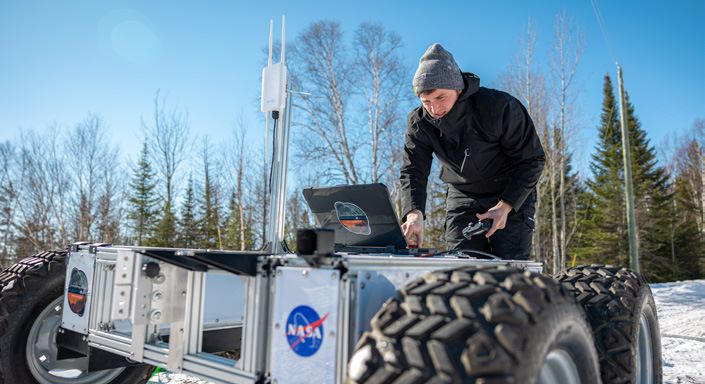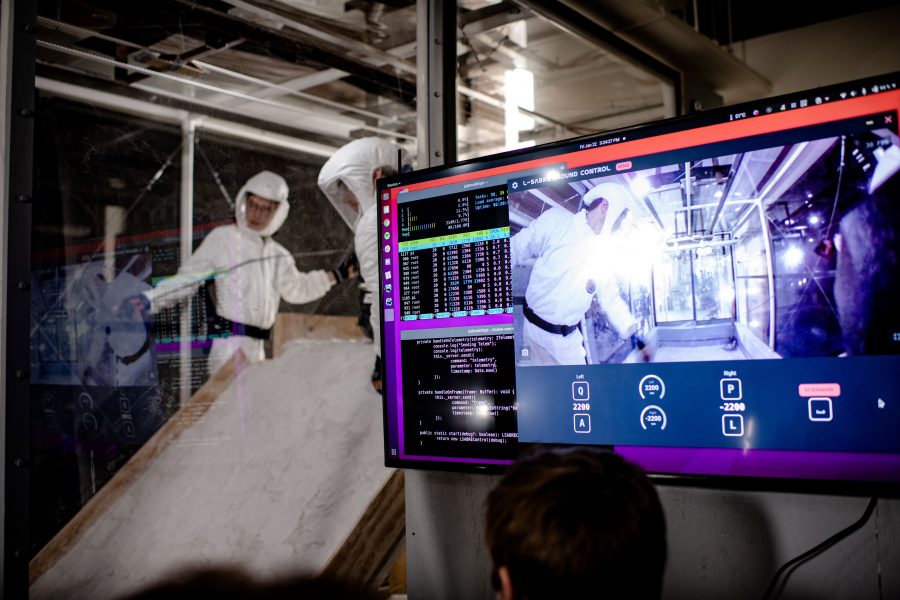Paul van Susante (ME-EM) recently accepted an endowed appointment as the Lou and Herbert Wacker Professor in Mechanical Engineering. Van Susante joined Michigan Tech in 2012 as a lecturer (a role now called assistant teaching professor) before accepting an appointment as an assistant professor. Not only does Dr. van Susante meet or exceed all the criteria for this professorship, he also has a vested interest in teaching.
This endowed position was established to retain and attract high-quality faculty who are at the top of their profession, can excite students to think beyond classroom material, and who can effectively integrate their research into the classroom.
Involving students in his research is vital to van Susante. He’s been recognized in the Dean’s Teaching Showcase and as one of the Department of Mechanical Engineering-Engineering Mechanics’ (ME-EM’s) Teacher of the Year finalists four times. Paul is also the faculty advisor for the Multiplanetary Innovation Enterprise (MINE) team, solving challenges in the mining industry.
In addition to obtaining over $3 million in funding as a principal investigator, Dr. van Susante leads Michigan Tech’s Planetary Surface Technology Development Lab (PSTDL) team. The lab, also known as HuskyWorks, includes several students who advanced to the final round of NASA’s Watts on the Moon Challenge in both 2022 and 2023. As part of these competitions, researchers from NASA and other robotics companies travel to Michigan Tech to meet with van Susante and his team.
Other projects include:
- NASA Lunar Surface Technology Research (LuSTR 2020)
- NASA Breakthrough Innovative and Game-changing (BIG) Idea Challenge 2020: “Tethered permanently shaded Region Explorer (T-REX)” –power and communication delivery into PSR
- NASA Break the Ice Challenge – the latest centennial challenge from NASA designed to develop technologies aiding in the sustained presence on the Moon
- NASA ESI (Early Stage Innovation) to excavate rock gypsum for water production on Mars
- NASA GCD MRE – Molten Regolith Electrolysis, or MRE, uses an electric current in a reactor to separate oxygen from lunar dust, also known as regolith. The scope of the project is to provide a regolith feeder and transportation system for the MRE reactor. Research into regolith properties, here on Earth, and in extreme environments like lunar gravity and vacuum are being conducted. Results from these experiments will be vital in choosing and developing these feeder and transportation technologies.
- HOPLITE (Heavy Onboard Platform for Lunar ISRU and Terrain Excavation) is a modular robotic system built at Michigan Tech that enables the field testing of IDSRU technologies. Many payloads are currently being designed and implemented for lunar applications and there is a need for accurate, reliable, and safe mobility of these payloads during filed testing. Using a large sensor array, fine tuned control and autonomy, HOPLITE is designed to provide a solution to this need.
The success in his research has translated to van Susante publishing 82 papers while at Michigan Tech and giving 37 invited talks. He is currently an associate editor for In-Situ Resource Utilization (ISRU) and the American Society of Civil Engineers (ASCE) Journal of Aerospace Engineering.
(reprinted from October 25, 2023 Tech Today.)


